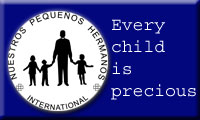I love felt boxes. They appeal to my instinct to sort, collect and organize and they satisfy my desire to fill my world with color. One of the first felt projects I tried was turning a piece of flat felt into a box using some bits and scraps of color I picked up in a fiber medley package. Since then I’ve made many, many, many boxes in different shapes and sizes for myself and for custom orders. I love working with the heathered colors of Harrisville Designs to create infinite combinations. The best suggestions come from customers who suggest pairing colors outside of my normal habits.
Despite my love of this product, there is no getting around the fact that it is both labor intensive and not profitable. There is something so satisfying about seeing sets of boxes stacked in a row. Then I calculate the time put into the task, close to two hours per box, and the back aches that come from working the felt until it is really rigid, which limit the number I can produce in a day. Realistically, I can’t continue selling them for $25 per box. And if I was a customer looking for a box, would I spend that much money for storage? I don’t think so.
This led me to wonder whether sewing the boxes out of industrial felt was a viable alternative. I looked up felt suppliers on Etsy then bought a yard of teal 3mm felt from a Canadian seller to the tune of $80/yd.
Could I make boxes that reflected my aesthetic using something that looked as flat as a pool table?
My first experiments have been a qualified success. I like the look, but these three boxes didn’t exactly jump off the table, and the felt was dear. The sewing machine I use, an early ’80s Kenmore hand-me-down from my mother, does not like sewing through 6mm of felt. It grinds, then gets stuck, then lurches forward a couple of stitches and then stops. Either this puppy needs a tune-up, or I need a cobbler’s sewing machine. The jury is still out on this one. In case my husband’s poker friends are wondering whether I’ve ripped up someone’s pool table, that is 3/4 of a yard of industrial felt waiting for me to decide just what to do with it.
PS. I read an article on pricing handmade items just minutes after publishing this post. With a little bird sitting on my shoulder, I relisted my soft felt box, handmade and handfelted to be durable and brighten your home, at a price that reflects the amount of work it takes to make them.






















You must be logged in to post a comment.